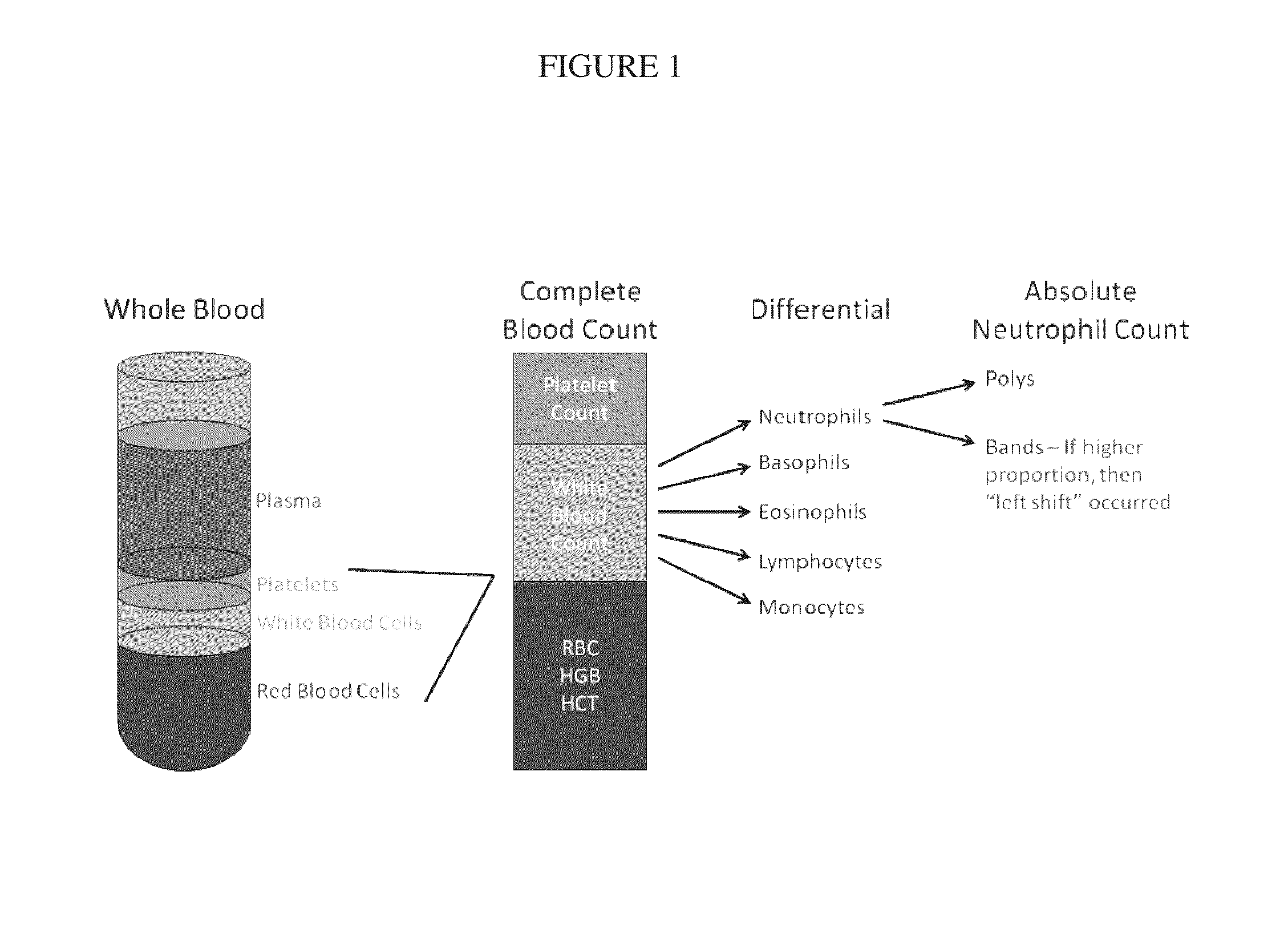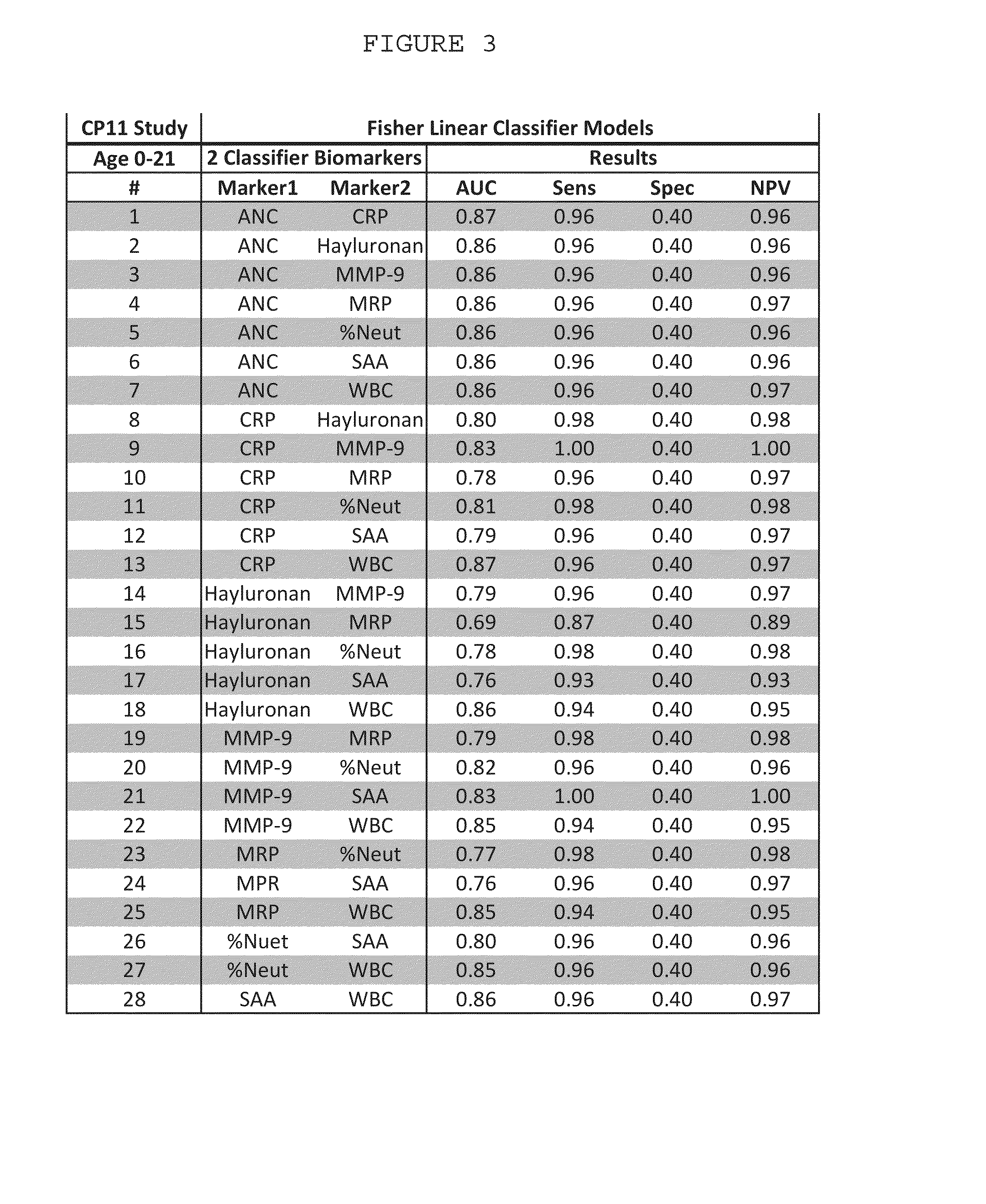Compositions and methods for assessing appendicitis
a technology of appendicitis and composition, applied in the field of methods, devices and systems for assessing appendicitis, can solve the problems of life-threatening complications, ruptured appendix, abscesses,
- Summary
- Abstract
- Description
- Claims
- Application Information
AI Technical Summary
Benefits of technology
Problems solved by technology
Method used
Image
Examples
example 1
Summary
[0223]Background:
[0224]Evaluating children for appendicitis is often difficult and strategies have been sought to improve the precision of the diagnosis. Computed tomography (CT) is often used in the diagnostic workup but there are concerns regarding the exposure to ionizing radiation and risk of subsequent radiation-induced malignancy.
[0225]Objectives:
[0226]We sought to identify a biomarker panel with sufficient sensitivity to rule out pediatric acute appendicitis without the need for additional imaging modalities.
[0227]Methods:
[0228]We prospectively enrolled 503 subjects aged two to 20 years presenting in 12 U.S. emergency departments who had abdominal pain and other signs and symptoms suspicious for acute appendicitis within the prior 72 hours. Subjects were assessed for 17 clinical attributes and blood samples were analyzed for CBC, differential, and 5 candidate proteins. Based on discharge diagnosis or post-surgical pathology the cohort exhibited a 28.6% prevalence (144 / ...
example 2
Establishment of AppyScore Cut-Off
[0265]Based on data obtained from 503 subjects, ages 2 through 20, in a research clinical study (CP-11), algorithms combining multiple biomarkers were developed to derive a single clinical appendicitis risk measure. Methods explored included; logistic regression, partitioning, discriminate models and principal component analysis (PCA). Performance was evaluated by area under the ROC curve (AUROC) and diagnostic performance (Sp, Se, NPV) comparing to the clinical outcome of confirmed appendicitis as the gold standard measure. The algorithm providing the optimal ROC and diagnostic performance was selected. The PCA method provided the best performance based on the pre-clinical data collected. Ten-fold cross-validation was used to verify the algorithm performance. In addition, the algorithm was verified using results from a retest of the CP-11 samples on kits manufactured in accordance with the Investigational AppyScore IVDMIA system. The resulting, bes...
PUM
| Property | Measurement | Unit |
|---|---|---|
| concentrations | aaaaa | aaaaa |
| white | aaaaa | aaaaa |
| surface plasmon resonance | aaaaa | aaaaa |
Abstract
Description
Claims
Application Information
 Login to View More
Login to View More - R&D
- Intellectual Property
- Life Sciences
- Materials
- Tech Scout
- Unparalleled Data Quality
- Higher Quality Content
- 60% Fewer Hallucinations
Browse by: Latest US Patents, China's latest patents, Technical Efficacy Thesaurus, Application Domain, Technology Topic, Popular Technical Reports.
© 2025 PatSnap. All rights reserved.Legal|Privacy policy|Modern Slavery Act Transparency Statement|Sitemap|About US| Contact US: help@patsnap.com



